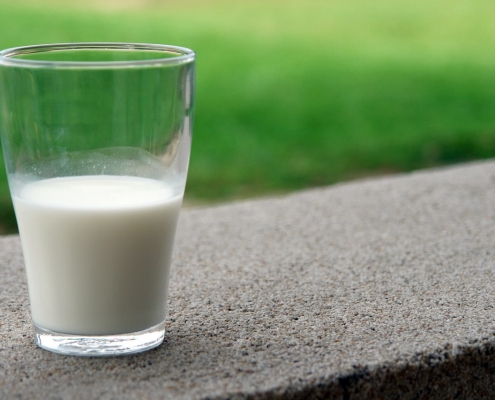Soybean and linseed oils added to cows’ diet improves the quality of milk
by Luciana Constantino, FAPESP
Research led by Arlindo Saran Netto, a professor at the University of São Paulo’s School of Animal Science and Food Engineering (FZEA-USP) in Pirassununga, São Paulo state, shows that consumption of these oils by dairy cows reduced the level of saturated fatty acids in their milk and increased the level of unsaturated fatty acids, which help reduce LDL, known as “bad cholesterol.”
The study showed that supplementing the cows’ feed with these two oils resulted in an omega-6/omega-3 ratio of 2.7:1 in their milk. Given the opposing effects of the two fatty acids, a healthy diet should be properly balanced. The World Health Organization (WHO) recommends between 5:1 and 10:1, but 50:1 could result from a diet consisting mostly of ultra-processed food with little fish and vegetables, causing an imbalance and heightening the risk of heart disease and cancer.
Like other mammals, humans cannot synthesize omega-6 or omega-3 and must obtain them from food. “Future studies should evaluate the health benefits of omega-enriched milk in the human diet,” the article concludes.
Method
The researchers worked with 18 lactating Holstein dairy cows for 94 days. All animals were fed the same diet for the first ten days, followed by three experimental periods of 28 days. Control was a regular dairy cow diet with no addition of oil. Then soybean oil was added at 2.5% as a source of omega-6, followed by 2.5% linseed oil as a source of omega-3. Both oils corresponded to 2.5% of total dry matter, replacing corn. These levels were chosen because in previous studies by the group they enhanced the fatty acid profile of the milk without significantly altering yield. Milk samples were then analyzed for fat, protein, lactose, and total solids.
Demand
Cow’s milk has historically been an important source of nutrients for human consumption. It is rich in proteins, calcium, magnesium, selenium and vitamin B12, among others. In recent decades, however, demand has fallen, especially in the United States and Canada, for several reasons including health and dietary concerns. For example, the fat in milk can cause allergic reactions and normally contains saturated fatty acids associated with weight gain and obesity. A great deal of scientific research has therefore been devoted to the adaptations needed to meet consumer demand for a healthier product.
Brazil ranks fifth among the world’s leading milk producers, with an annual output of 34 billion liters. Dairy is one of the most important segments of its food industry. Annual consumption of milk averages 170 liters per capita, less than the developed-country average (250-300 liters). UHT (long life) milk is the most consumed milk product, but sales of cheese have risen strongly in recent years.
> Source: PHYS.ORG



 Credit: pexel @Hiếu /CC0 Public Domain
Credit: pexel @Hiếu /CC0 Public Domain Credit: unsplash @Joshua Hoehne/CC0 Public Domain
Credit: unsplash @Joshua Hoehne/CC0 Public Domain